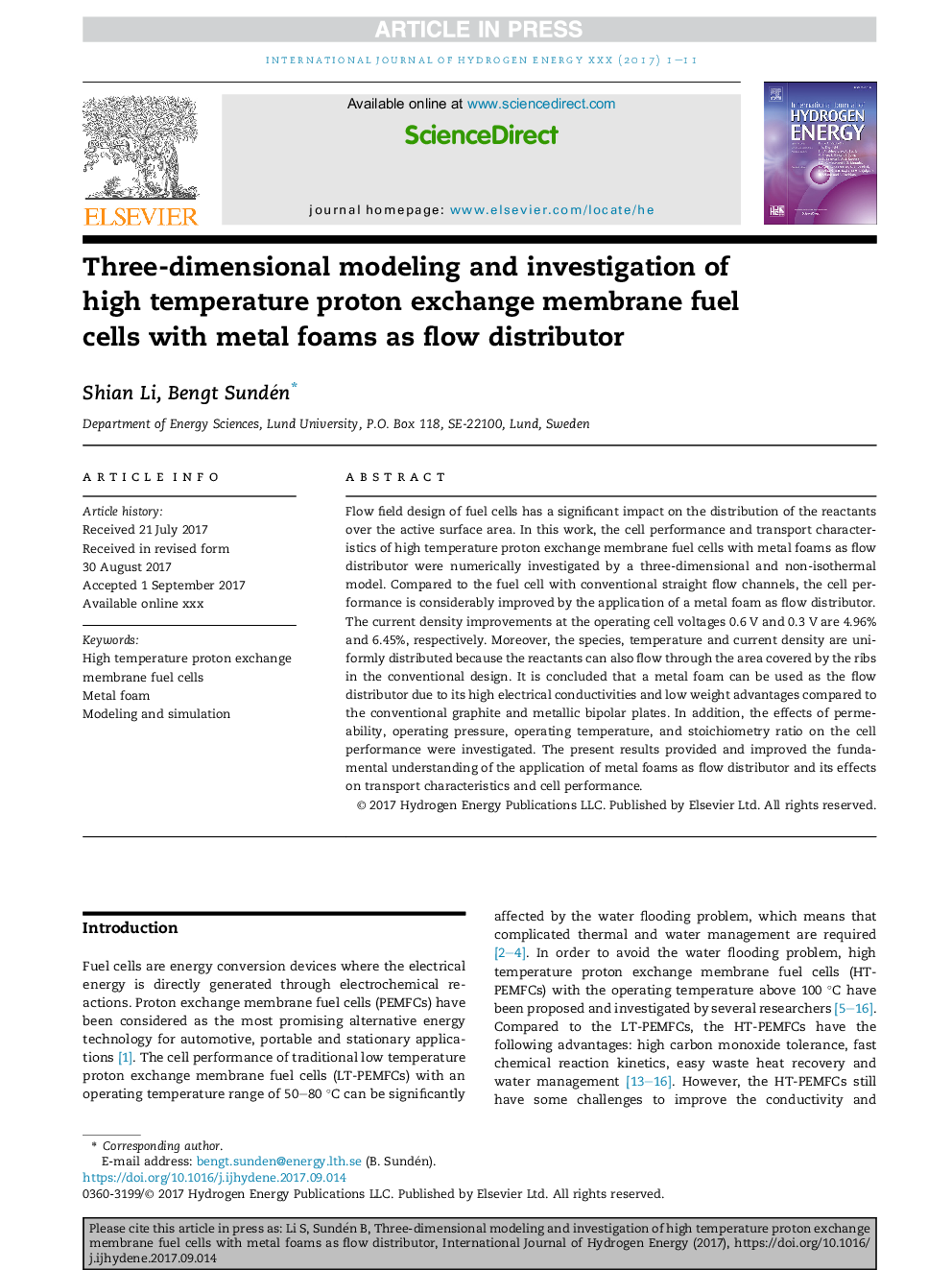| Article ID | Journal | Published Year | Pages | File Type |
|---|---|---|---|---|
| 7709714 | International Journal of Hydrogen Energy | 2017 | 11 Pages |
Abstract
Flow field design of fuel cells has a significant impact on the distribution of the reactants over the active surface area. In this work, the cell performance and transport characteristics of high temperature proton exchange membrane fuel cells with metal foams as flow distributor were numerically investigated by a three-dimensional and non-isothermal model. Compared to the fuel cell with conventional straight flow channels, the cell performance is considerably improved by the application of a metal foam as flow distributor. The current density improvements at the operating cell voltages 0.6Â V and 0.3Â V are 4.96% and 6.45%, respectively. Moreover, the species, temperature and current density are uniformly distributed because the reactants can also flow through the area covered by the ribs in the conventional design. It is concluded that a metal foam can be used as the flow distributor due to its high electrical conductivities and low weight advantages compared to the conventional graphite and metallic bipolar plates. In addition, the effects of permeability, operating pressure, operating temperature, and stoichiometry ratio on the cell performance were investigated. The present results provided and improved the fundamental understanding of the application of metal foams as flow distributor and its effects on transport characteristics and cell performance.
Related Topics
Physical Sciences and Engineering
Chemistry
Electrochemistry
Authors
Shian Li, Bengt Sundén,
